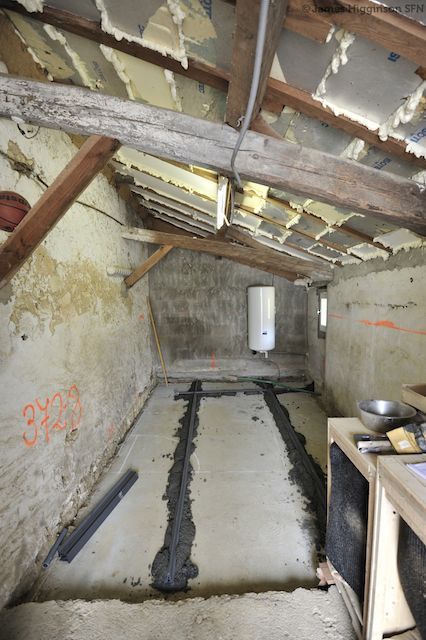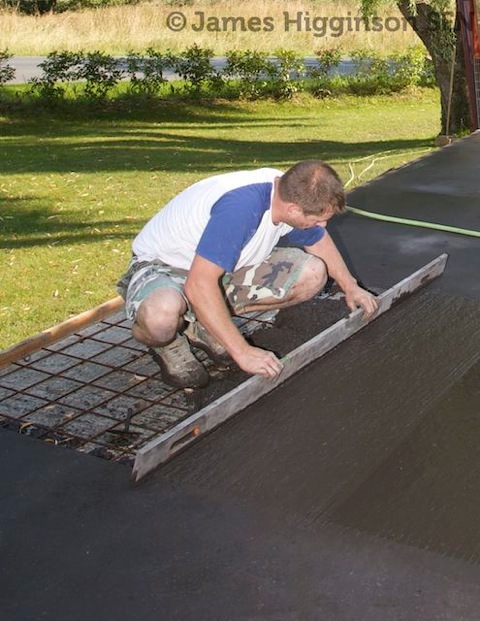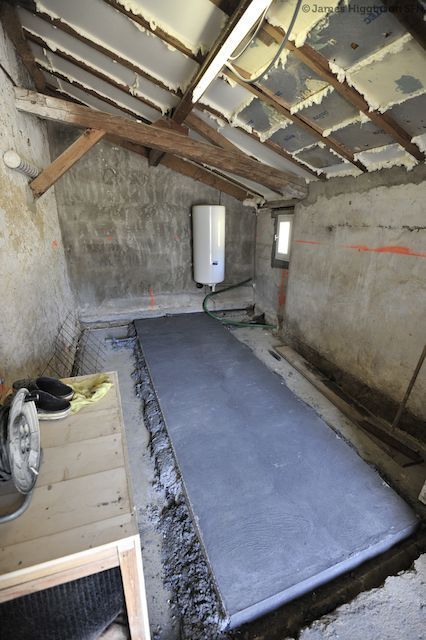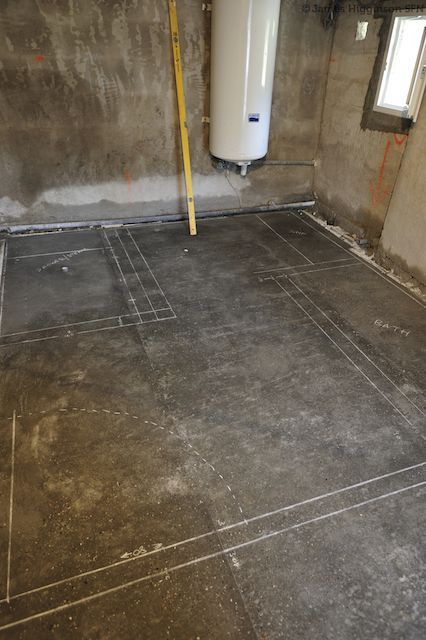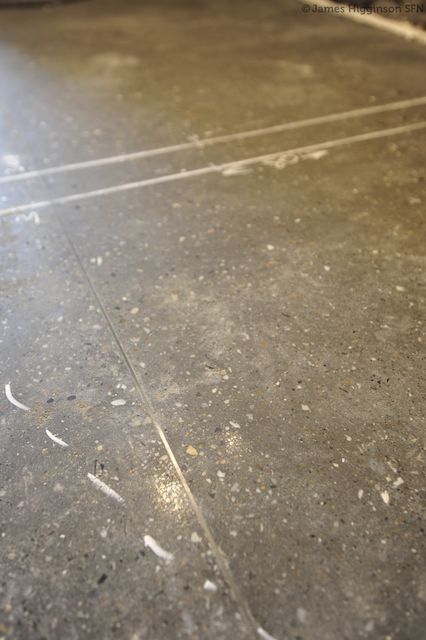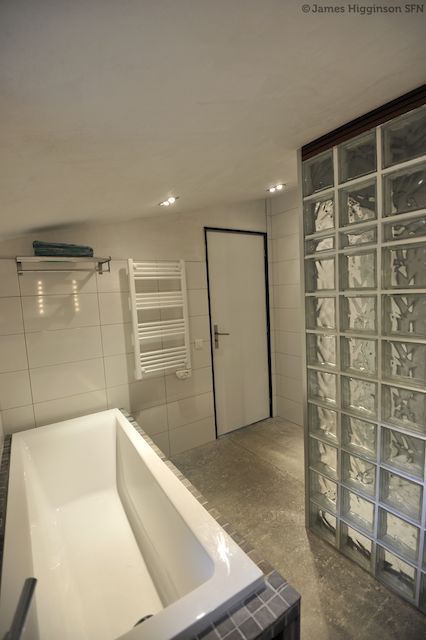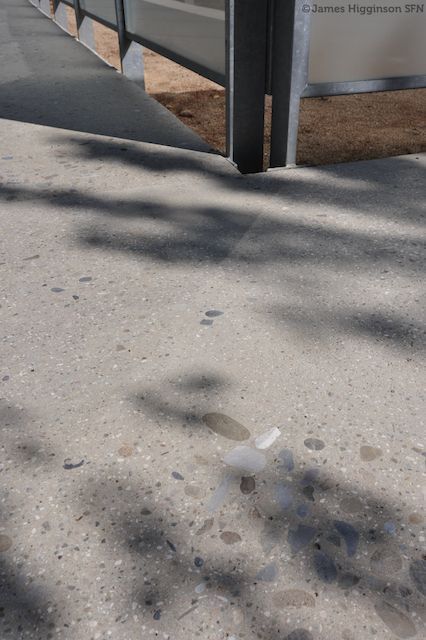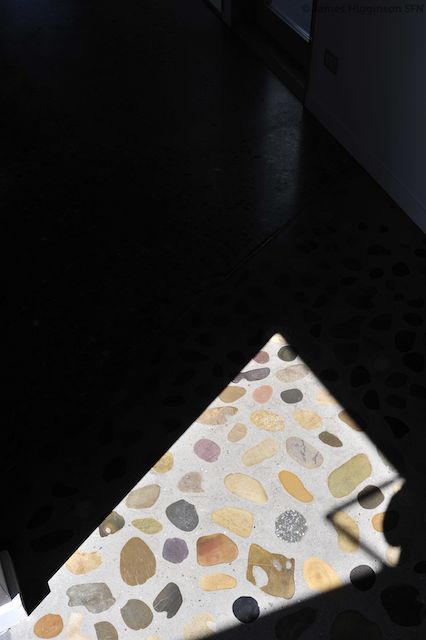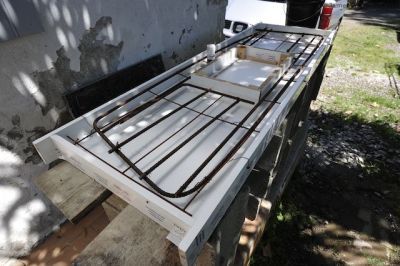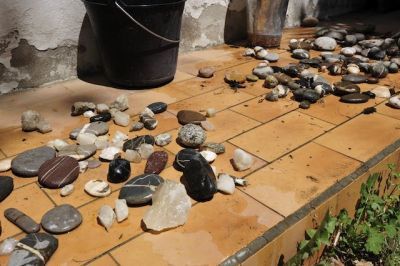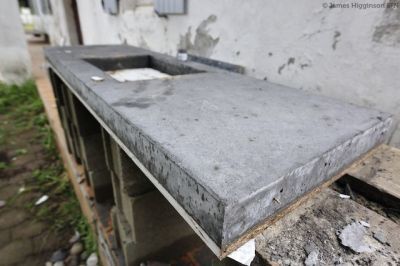Being a fan of the semi industrial look, I've loved polished concrete since I first picked up Fu Tung Cheng's book on the subject, 'Concrete Countertops'. Recently I poured some new concrete floors with the intention of polishing them; here's a bit of information on how I did it. The post is intentionally brief. I'm quite passionate about the subject so I encourage you to ask any questions you might have and I'll do my best to impart some of my knowledge of the subject.
If you already have concrete floors then you're off to a good start. In this case I didn't. There was originally an earth floor in this part of the house, so I needed to pour new concrete. The benefit of this was that I was able to make the floor perfectly flat to within a tolerance of just a few millimetres; this meant that there was less work to do to polish the floor.
Using what are called expansion joints or 'joints de dilatation' - I was able to level the floor off with a screed batten very easily. The joints function as a guide when sliding the batten across the surface thus ensuring an accurate and level finish. That is, assuming you fixed them in place correctly!
This photo is obviously from another job but hopefully you can see how I'm using the joints to create the level surface. Large concrete surfaces will require these joints to control cracking in any case, so installed like this they perform a secondary purpose.
Here, the central panel is poured and curing, the next day I will finish either side. If you try to do it all in one day you'll damage the surface with the screed batten.
Don't try to polish concrete until it's at least 4 days old, the surface will come away too readily and it will be harder to achieve a great finish.
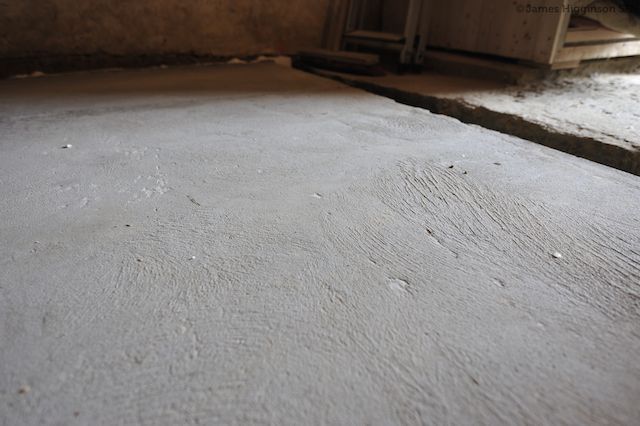
As you can see, the floor is nice and flat, there are still pits and divots in it though, so the first stage of the polishing process is actually grinding the surface away. This will firstly make it perfectly flat but it will also expose the aggregates within the concrete. These coloured stones will then be visible in the final finish; this is what makes it attractive and interesting to look at. Without this stage you would simply be polishing the very fine sand and cement portion of the concrete and you would be left with a plain grey floor surface.
This stage is very important. Take your time and make sure you haven't missed anything. During this phase it is very difficult to see the surface if you are using a wet polishing technique as I did here. The amount of slurry generated makes it impossible to see how you're doing. You have to stop frequently and clear the floor with a squeegee.
The machine I used was this marble polisher from Kiloutou, it comes with the grind wheel (attached) and various different grades of polishing pads. The grind wheel stage is hard work. This is not a machine designed to polish concrete and as such, you have to lift it to get it to spin on the very rough concrete. Subsequent stages don't require this. I did this a couple of years ago, and I notice they now have more specific concrete polishing equipment available in some branches including dry polishers which will be required in cases where water can't be used.
Dry polishers are used in conjunction with an industrial vacuum cleaner to keep the dust to a minimum.
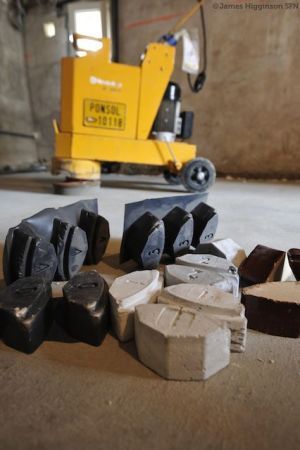
Working methodically and with progressively finer grade pads, the surface was polished to a fairly high sheen. You can go much further than I did with this and end up with a mirror finish, just like marble.The surface is still quite dark after a day or so due to the amount of water required.
You can see the small stones in this image, the more grinding you do in the first phase the larger the aggregates will appear in the finished product, as you can see from the images below taken at the fabulous hotel 'Aire de Bardenas'.
Some of the aggregates in those floors are so large they must have been cut in half and placed manually before polishing.
Hotel Aire de Bardenas images below
Polishing concrete is becoming more popular outside of the US where it has been employed widely for quite some time and as a result, polishing equipment is becoming available to hire making this a potential DIY job. Given the cost of more traditional floor finishes it is potentially on a par and with careful planning could easily cost less than a tiled surface. It is certainly an unusual and unique option so, would you have a go or do you prefer a more traditional finish?
Thanks
James
